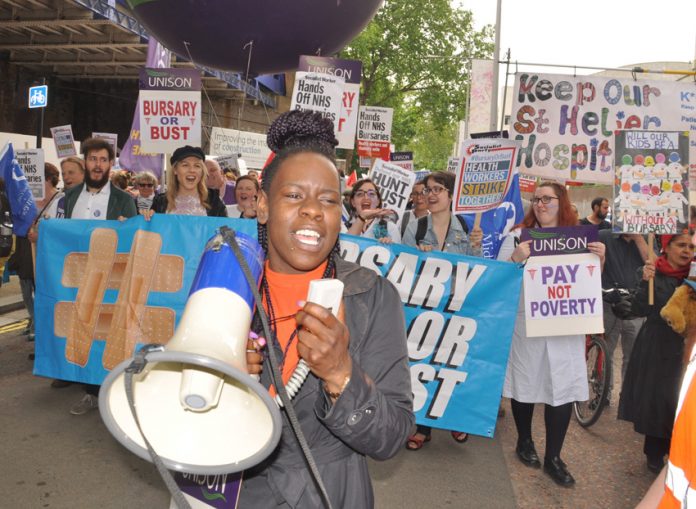
THE CLOSURE of maternity departments at hospitals up and down the country and the severe lack of midwives has created a situation where as many as 1,000 babies are dying during childbirth or are left with severe brain injury every year.
A NHS-backed investigation into why so many babies are dying during childbirth has found that it is a lack of staff and heavy workload which are the two key factors in the ‘unexplained’ deaths.
The Healthcare Quality Improvement Partnership report states that one in four deaths occur because a maternity unit, especially a delivery suite, is struggling with ‘staffing and capacity problems.’
Royal College of Midwives (RCM) general secretary Gill Walton said they are extremely concerned about the massive shortfall of midwives in the UK. The union says it has consistently warned the government that the UK is at least 3,000 midwives short of what it needs.
However, rather than encouraging more students to study to become the next generation of midwives, the Tory government has taken away their student bursaries. This bursary was a grant that students did not have to re-pay. It covered their entire tuition fees and gave them some money towards their accommodation and living expenses while they trained.
Since the bursary has been axed, the number of students applying to become nurses and midwives has plummeted. RCM leader Walton insisted: ‘We must ensure we have enough midwives and obstetricians to provide safe care throughout the maternity pathway, and adequate facilities in all birth settings.’
Tory Health Secretary Hunt announced that all unexplained cases of serious harm or death would now be independently investigated. Hunt said he hoped this would help the NHS learn from mistakes as part of the drive to halve the overall rate of stillbirths, deaths and brain injuries by 2025 – five years earlier than previously announced.
However it is Hunt, working alongside the head of NHS England Simon Stevens, who is embarking on the biggest maternity closure programme since the creation of the NHS in 1948. In north east London the maternity unit at Chase Farm Hospital closed on December 9th 2013. In west London, Ealing Hospital maternity department closed on July 1st 2015.
Under the Sustainability and Transformation Plans, which were promised new money in the budget to speed up their implementation, there are 11 maternity units facing closure. A further 19 hospitals also face complete closure, which means the loss of a further 19 maternity units – a total of 30.
The 11 maternity units facing closure or consolidation are:
• Lancashire and South Cumbria: Consultant-led maternity care at West Cumberland Hospital.
• West Yorkshire and Harrogate (two sites): Downgrade of A&E and maternity at Dewsbury and Huddersfield planned.
• South Yorkshire and Bassetlaw: ‘Reshaping’ of children’s and maternity services due to lack of specialist staff.
• Lincolnshire: Maternity services centralised at Lincoln.
• Leicestershire and Rutland (two sites): Maternity service to close at Leicester General Hospital and birthing centre planned to shut in Melton Mowbray.
• Birmingham and Solihull: Increase in maternity units led by midwives alone.
• Milton Keynes: Maternity services in Milton Keynes to be reduced or merged with provision in Luton or Bedford.
• Dorset: Premature babies (born at 27-32 weeks) potentially no longer to be cared for at Dorset County Hospital.
• Coventry and Warwickshire: Maternity and children’s care to move from George Eliot Hospital to University Hospital, Coventry.